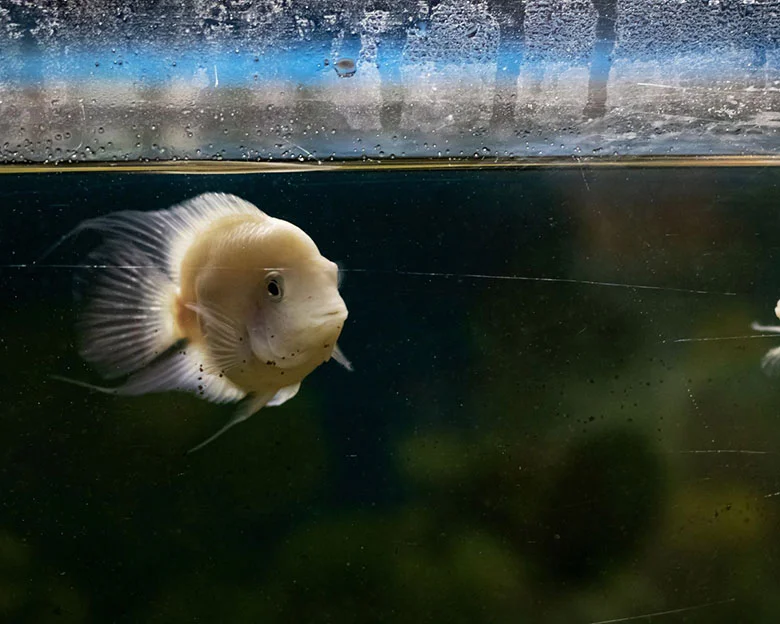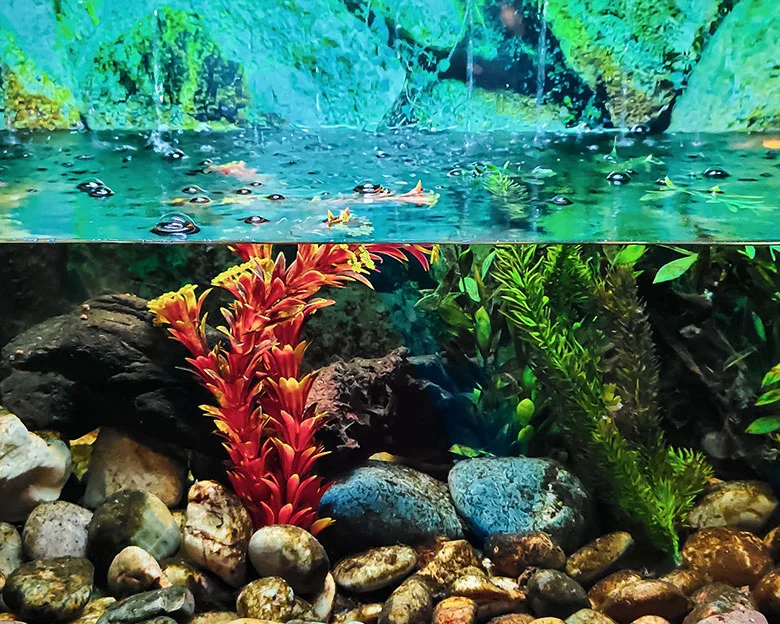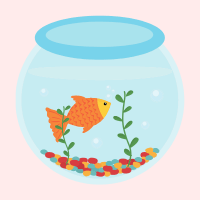Are you struggling to maintain the right water conditions in your aquarium? Water hardness is a crucial factor that affects the health and well-being of your fish and invertebrates. If the water is too hard, it can lead to mineral buildup, while soft water can cause instability in pH levels.
In this article, we will discuss five safe methods for softening aquarium water to help you maintain a healthy and thriving aquatic environment. First, we will explore the different types of water hardness, including general hardness (GH) and carbonate hardness (KH). You will learn about the importance of these parameters and how they affect your aquarium inhabitants.
We will also discuss the specific needs of different species of fish and shrimp and how softening the water can benefit them. Whether you have a freshwater or saltwater aquarium, this article will provide you with valuable information on how to maintain the best water conditions for your aquatic pets.
Key Takeaways
- Fish can adapt to a wide range of tank conditions if acclimated properly.
- Providing stable, clean conditions for fish is often all that is needed to keep them happy and healthy.
- Softening water may not be necessary if fish and shrimp are happy.
- GH and KH formulas, rainwater, distilled water, RO/DI water, Indian almond leaves, and peat can be used to reduce GH and KH.
Types of Water Hardness

You may already know that general hardness (GH) and carbonate hardness (KH) are two different types of water hardness. Understanding their importance for fish and invertebrates is crucial for maintaining a healthy aquarium.
GH measures the concentration of calcium and magnesium ions in the water, which are vital nutrients for these organisms. Calcium helps with muscle and bone development, while magnesium is important for metabolic processes. Fish need these minerals to carry out their bodily functions, and invertebrates like snails and shrimp rely heavily on the mineral content of water.
On the other hand, KH measures the concentration of carbonate and bicarbonate ions in the water, which have a direct effect on pH. This is because they act as buffers, preventing the pH from fluctuating too much. KH is not as crucial for fish osmoregulation as GH, but it is still important for maintaining a stable pH.
Fish have different adaptation strategies to deal with varying levels of GH and KH, so it is essential to research the specific requirements of your aquatic pets before attempting to adjust the water parameters.
Importance of GH and KH
Understanding the importance of GH and KH in your fish tank is crucial for maintaining the health and well-being of your aquatic pets. GH, or general hardness, is the measure of dissolved minerals like calcium and magnesium in your aquarium water. This is important for fish osmoregulation, which is the process of maintaining the right balance of water and salt in their bodies.
KH, or carbonate hardness, on the other hand, has a direct effect on pH. It measures the amount of carbonate and bicarbonate ions in the water, which are important for buffering pH changes.
- GH is essential for fish breeding. Fish need a certain level of GH to produce eggs and for the eggs to hatch successfully. This is especially important for species that require specific water conditions to spawn.
- High GH can negatively affect aquarium plants. Some plants don’t like high GH levels, and it can lead to stunted growth or even death. It’s important to know which plants are sensitive to high GH and adjust accordingly.
- Invertebrates like snails and shrimp rely heavily on the mineral content of water. They need minerals like calcium and magnesium to grow their shells and maintain their health.
- Providing stable GH and KH levels is important for the overall health and well-being of your fish. Changes in water parameters can stress out your fish and make them more susceptible to diseases. Maintaining a stable environment is key to keeping your fish happy and thriving.
Acidic Methods
By adding acidity to your tank, you can adjust the levels of minerals and bicarbonate ions in your aquatic environment to promote a healthy balance for your fish and invertebrates. Acidic methods involve the use of acids such as citric acid, vinegar, or phosphoric acid to lower the pH and KH of the water. This process can help to preserve essential minerals while creating an environment that is more suitable for certain species.
It’s important to note that adding acid to your aquarium should be done carefully and with precision. Overdosing can lead to a sudden drop in pH, which can be harmful to your aquatic pets. To help you understand the proper dosage, we’ve created a table that outlines the recommended pH and KH levels for various species. By using this table as a guide, you can ensure that you are providing the best possible environment for your fish and invertebrates while using acidic methods for pH adjustment and mineral preservation.
| Species | pH Range | KH Range |
|---|---|---|
| Neon Tetra | 5.5 – 7.0 | 1 – 2 |
| Betta | 6.0 – 7.5 | 3 – 5 |
| Cherry Shrimp | 6.0 – 7.5 | 0 – 2 |
| Guppy | 6.8 – 7.8 | 5 – 10 |
| Goldfish | 7.0 – 8.4 | 8 – 12 |
Remember to always monitor the pH and KH levels of your water after adding acid, and adjust as necessary. With proper care and attention, acidic methods can be an effective way to soften your aquarium water and create a comfortable and healthy environment for your aquatic pets.
Rainwater

To utilize rainwater as a natural method for adjusting water hardness and pH levels in your tank, it’s important to collect and store the water properly to avoid contamination and mosquito breeding.
Collecting rainwater can be as simple as placing a clean, uncovered container outside during a rainfall. However, it’s important to ensure that the container is free of chemicals or residues, as these can negatively impact the water quality.
Additionally, to avoid mosquito breeding, the container should be emptied and cleaned regularly, or covered with a fine mesh to prevent access by mosquitoes.
Proper storage techniques are also crucial for maintaining the quality of collected rainwater. The container should be stored in a cool, dark place to prevent algae growth and the breakdown of organic matter.
A lid or cover should be used to prevent dust or debris from falling into the container. If the water is going to be stored for an extended period of time, it should be treated with a dechlorinator to prevent the growth of harmful bacteria.
By following these simple steps, rainwater can be a safe and effective method for softening aquarium water.
Remineralization
If you want to ensure that your fish and invertebrates have the necessary minerals for their bodily functions, you’ll need to add minerals back into your water through a process called remineralization – as the adage goes, ‘you can’t give what you don’t have.’
Remineralization is the process of adding back in the minerals that were removed from the water during the softening process. There are several ways to remineralize your water, and the method you choose will depend on your specific needs and preferences.
One way to remineralize your water is by using calcium sources. Calcium is an important mineral that is essential for the health and wellbeing of your fish and invertebrates. Some common calcium sources include crushed coral, limestone, and aragonite. These materials can be placed in a filter bag and added to your aquarium to help increase the mineral content of your water.
Another option is to use a commercial remineralization product, which is specifically designed to add back in the minerals that were removed during the softening process. Whatever method you choose, it’s important to test your water regularly to ensure that the mineral content is appropriate for your livestock.
Natural Products
One option for adding minerals back into your tank is to consider natural products. These can include products such as Indian almond leaves and peat. Indian almond leaves, in particular, have been known to provide many benefits for shrimp tanks. Not only do they release tannins into the water, which can create a natural, beautiful brown color, but they also provide a source of minerals and vitamins that can promote shrimp health.
To better understand the benefits of Indian almond leaves in shrimp tanks, consider the following table:
| Benefit | Explanation |
|---|---|
| Releases tannins | Creates a natural brown color in the water, mimicking the shrimp’s natural habitat |
| Provides minerals and vitamins | Promotes shrimp health and helps with molting |
| Lowers pH | Ideal for Caridina shrimp who prefer a lower pH environment |
| Antibacterial and antifungal properties | Helps prevent diseases and infections in the tank |
| Aids in reproduction | Creates a more natural environment for shrimp to breed in |
Overall, natural products such as Indian almond leaves and peat can be a great option for those looking to add minerals back into their aquarium in a safe and natural way. When considering using these products, it’s important to research which ones are best suited for your specific tank and the species of shrimp you have.
Considerations for Shrimp
When caring for shrimp in your tank, it’s important to consider their specific needs for minerals and water parameters. Shrimp acclimation is a crucial step in the process of introducing them into your aquarium.
Here are some considerations for shrimp:
- Shrimp require a specific GH range for optimal health and breeding. It’s important to research the specific GH requirements of the species of shrimp you plan to keep.
- Sudden changes in water parameters can be stressful for shrimp. Gradually acclimate them to the new water conditions by slowly adding small amounts of the new water to their current environment.
- Ornamental shrimp, such as cherry shrimp, prefer higher GH levels, while Caridina shrimp, such as crystal red shrimp, require lower KH and pH levels.
- When using natural products, such as Indian almond leaves or peat, it’s important to monitor the GH levels regularly to ensure that they are within the appropriate range for your shrimp.
By understanding the specific needs of your shrimp and taking the necessary steps for acclimation, you can provide them with an optimal environment for their health and well-being.
Distilled and RO/DI Water
To provide your shrimp with pure and mineral-free water, you can use distilled or RO/DI water, which are as pure as a freshly fallen snowflake. Distilled water is completely pure, with a pH of 7.0 and zero mineral content, and can be bought in stores. It is an excellent option for those who want to avoid any potential contaminants or impurities in their water. However, it is important to note that distilled water lacks essential minerals that are needed for the health of your shrimp. To remineralize the water, you can add a product like Salty Shrimp Mineral Powder or mix it with tap water that has a suitable mineral content.
On the other hand, RO/DI water is purified through a fine membrane and can be mixed with tap water for reliable results. It is a popular option among hobbyists who want to control the mineral content of their water. However, RO/DI systems require installation and take up space under cabinets. Additionally, it is an expensive and wasteful option as a significant amount of water is wasted during the purification process. Here is a table that summarizes the pros and cons of using distilled and RO/DI water for your aquarium:
| Buying options | Pros | Cons |
|---|---|---|
| Distilled water | Completely pure, no contaminants or impurities | Lacks essential minerals |
| RO/DI water | Reliable results, control of mineral content | Requires installation, expensive, wasteful |
Ultimately, the choice of using distilled or RO/DI water depends on your preferences and needs. It is important to research and understand the necessary mineral content for your specific species of shrimp before making a decision.
Frequently Asked Questions
Can Water Softeners Be Used In Aquariums To Soften Water?
Water softeners should not be used in aquariums as they remove vital nutrients for fish and invertebrates. Alternative methods for softening water include using rainwater, distilled or RO/DI water, Indian almond leaves, or peat. Safety is important when using any method.
How Do I Know If My Fish Or Shrimp Need Specific Water Conditions To Spawn?
To determine if your fish or shrimp require specific water conditions for spawning, it’s important to research their species and natural habitat. Water parameters such as temperature, pH, GH, and KH play a crucial role in breeding success and should be carefully monitored.
Are There Any Risks Associated With Collecting And Storing Rainwater For Use In Aquariums?
When collecting rainwater for use in aquariums, it’s important to take precautions to ensure its quality. Long-term use of rainwater can lead to imbalanced mineral levels, but alternatives like RO/DI water or tap water mixed with remineralizers are available.
What Are The Benefits And Drawbacks Of Using Ro/Di Water In Aquariums?
RO/DI water is purified and free of contaminants, making it ideal for aquariums. However, it lacks essential minerals and may need to be remineralized. Home water softeners should not be used as they remove vital nutrients.
How Do I Properly Research And Choose The Right Species Of Shrimp For My Aquarium?
To choose the right species of shrimp for your aquarium, research their compatibility with your specific tank size. A statistic shows that dwarf shrimp can thrive in tanks as small as 2.5 gallons. Ensure proper water parameters and consider the temperament of other tank inhabitants.
Soften Your Aquarium Water for a Safe and Healthy Haven
Congratulations, you now know the five safe methods for softening aquarium water.
Remember, the health and well-being of your fish and invertebrates depend on maintaining the right water conditions. Understanding the importance of GH and KH and the specific needs of different species can help you create a healthy environment for your aquatic pets.
Now that you know the different methods of softening water, it’s important to consider which one is right for your aquarium. Do you prefer a more natural approach with Indian almond leaves and peat, or a more technical approach with RO/DI water and remineralization?
Don’t forget to consider the needs of your shrimp, as they require specific water parameters. By taking the time to research and choose the right method for your aquarium, you can provide your aquatic pets with a safe and healthy home.

